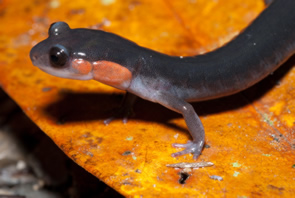
Plethodon jordani
Photo by D Dennis
Description: There were formerly seven subspecies of Jordan’s salamander, all of which are now considered to be separate species. The species currently recognized as the Jordan’s salamander can be identified by the presence of red, orange, or yellow cheek patches. Younger salamanders tend to have brighter cheek patches than older individuals. There are no white, red, or yellowish markings anywhere on the back, sides, or belly. Some imitator salamanders (Desmognathus imitator) also have red, orange, or yellow cheek patches but also have a light line from the eye to the back of the jaw. Unlike the Jordan’s salamander, the back legs of the imitator salamander are also much stockier than the front legs.
Habitat/Range: This species only occurs in wooded habitats at high elevations in the Great Smoky Mountains National Park. This highly-terrestrial species is often found under rocks, logs, or debris on the forest floor. These salamanders are most easily detected at night, especially under wet conditions, as individuals wander the forest floor in search of food. Across its small range, this species is often extremely abundant.
Diet: Jordan’s salamanders consume primarily small forest floor invertebrates.
Reproduction: Nests of Jordan’s salamanders have never been found. It is likely that they lay their eggs in underground cavities during late spring or early summer. Females of most closely-related species will guard their eggs until hatching and it is thought that Jordan’s salamander females probably do the same. Jordan’s salamander hatchlings do not go through an aquatic larval stage. Instead, when young salamanders emerge from their eggs they look like miniature adults.
Miscellaneous: When threatened, Jordan’s salamanders release noxious, sticky skin secretions which are used to deter predators.
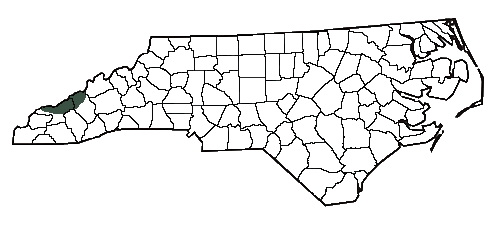
The shaded region represents the range of Jordan's salamander in North Carolina.
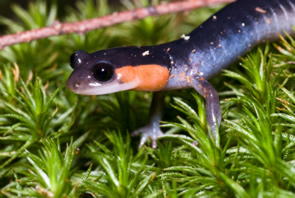
-gmc-5-27-2008-Clingman's Gap Rd, GSMNP.jpg)
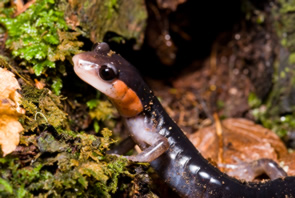
Photo by Grant Connette
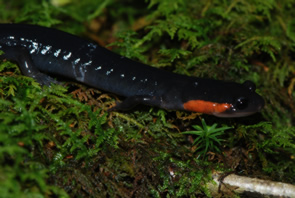
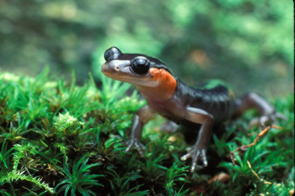
Photo by Grant Connette
Photo by D Dennis
